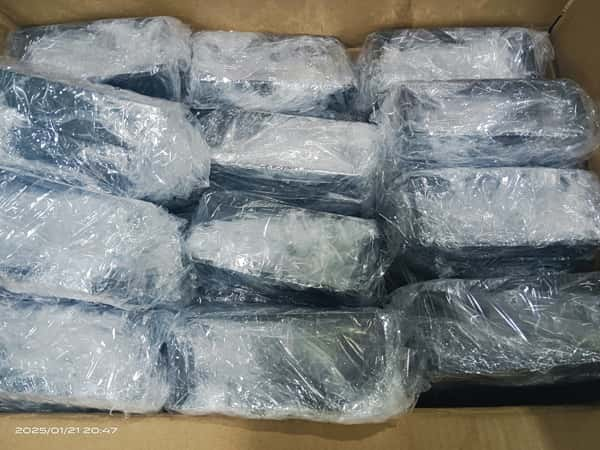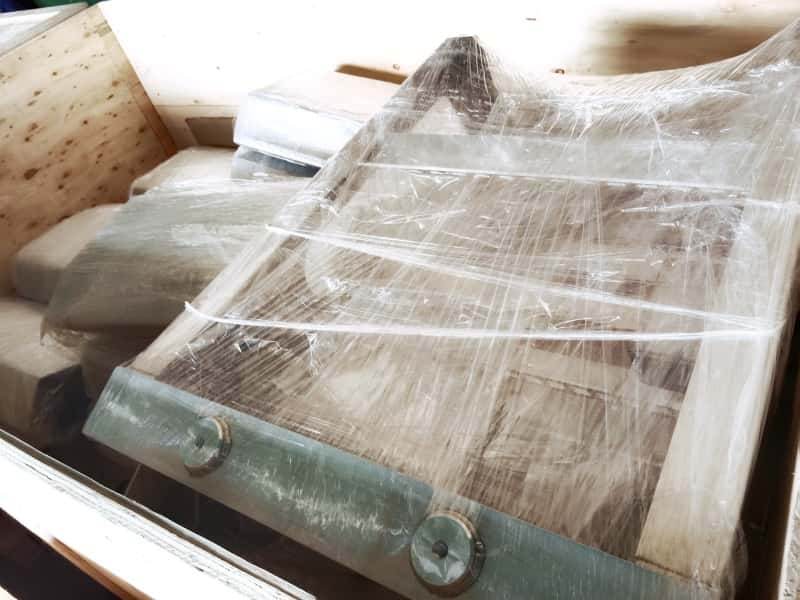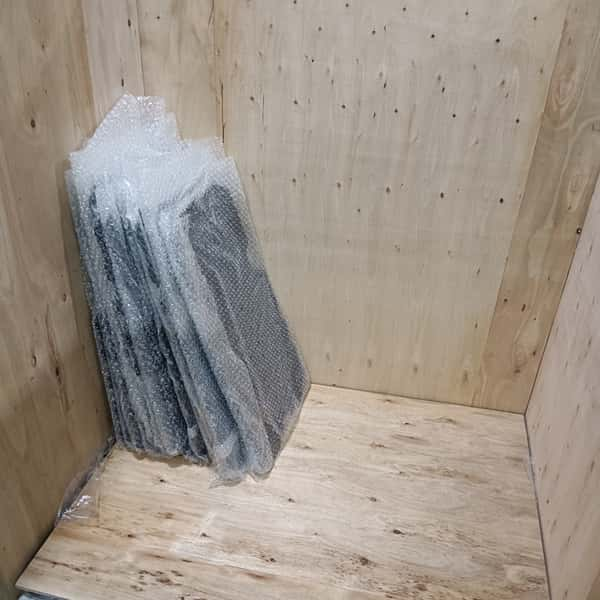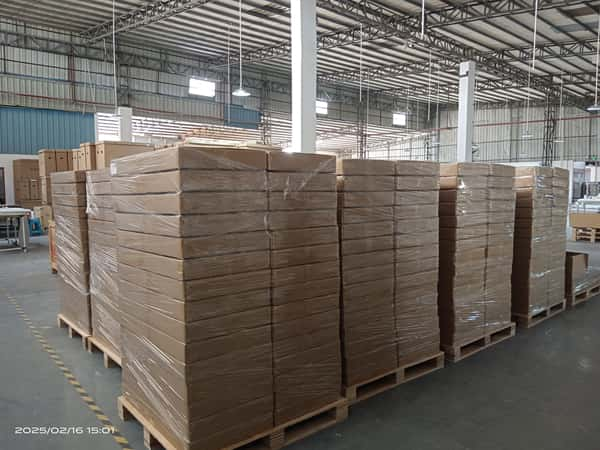Sheet metal packaging involves protecting, storing, and transporting sheet metal parts or assembled products while preventing damage, corrosion, and deformation. Proper packaging ensures safe handling and delivery
to customers. Below are key considerations and methods:
1. Packaging Requirements for Sheet Metal
Protection: Prevent scratches, dents, and bending.
Corrosion Resistance: Avoid moisture exposure (especially for bare steel, aluminum, or galvanized sheets).
Stacking & Handling: Ensure stability during transport.
Labeling: Clearly mark part numbers, quantities, and handling instructions.
2. Common Sheet Metal Packaging Methods
A. Individual Part Packaging
Bubble Wrap/Foam Sheets: For small or delicate parts.
Cardboard Dividers: Separate parts to avoid contact damage.
Plastic Bags (VCI or Anti-Static):
VCI (Vapor Corrosion Inhibitor) Bags: Prevent rust for steel parts.
Anti-Static Bags: For electronic enclosures to avoid static discharge.
B. Bulk Packaging for Multiple Parts
Wooden Crates/Pallets: Heavy-duty protection for large or heavy sheets.
Corrugated Cardboard Boxes: For medium-sized parts with foam inserts.
Metal or Plastic Strapping: Secures stacked sheets to prevent shifting.
C. Specialized Packaging for Large Sheets
Edge Protectors (Cardboard or Plastic): Prevent bending on corners.
Slip Sheets (Corrugated or Plastic): Separate layers in a stack.
A-Frame Racks (for Coils): Used for rolled sheet metal to prevent unrolling.
3. Corrosion Prevention Methods
Desiccant Packs: Absorb moisture inside sealed packaging.
Rust Inhibitor Sprays/Oils: Temporary coating for steel parts.
Wax Paper Interleaving: Placed between sheets to prevent friction corrosion.
4. Labeling & Documentation
Part Numbers & Quantity
Handling Symbols (Fragile, This Side Up, Keep Dry)
Barcode/QR Codes (for tracking)
Material Certifications (if required for compliance)
5. Shipping & Storage Considerations
Avoid Direct Floor Contact: Use pallets or skids to prevent moisture absorption.
Climate-Controlled Storage: For sensitive materials (e.g., untreated steel).
Secure Loading: Use straps or braces to prevent movement in transit.
6. Sustainable Packaging Options
Reusable Containers: For in-house transport or returnable customer packaging.
Recyclable Materials: Cardboard, paper, or biodegradable foam.
Example Packaging Workflow
Clean & Inspect Parts (remove oil/debris).
Wrap in VCI Film or Bubble Wrap.
Place in Cardboard Box with Dividers.
Seal & Label with Handling Instructions.
Load onto Pallets with Edge Protection.
China Sheet Metal Parts Manufacturers | China Sheet Metal Fabrication Factory
China Sheet Metal Fabrication Manufacturers | Sheet Metal Manufacturers in China
Custom Sheet Metal Parts | Box Sheet Metal | Custom Sheet Metal Enclosures
Sheet Metal Assembly: Comprehensive Guide
Sheet metal assembly involves joining formed sheet metal components
into functional structures using mechanical fasteners, welding, adhesives
or interlocking designs.below is a detailed breakdown of techniques, best
practices and industry applications.
1. Common Sheet Metal Assembly Methods
A. Mechanical Fastening
Best for: Non-permanent joints, mixed materials, or when disassembly is needed.
Screws & Bolts:
Self-tapping screws for thin sheets.
PEM® nuts (press-in threaded inserts) for reinforced threads.
Rivets:
Pop (Blind) Rivets: Only one-side access needed.
Solid Rivets: Higher strength (used in aerospace).
Clips & Clamps: For quick assembly (e.g., automotive panels).
B.Welding
Best for: Permanent, high-strength joints.
Spot Welding: Fast, low heat input (common in automotive).
MIG/TIG Welding: For thicker metals or precision work.
Laser Welding: High accuracy, minimal distortion (electronics, medical devices).
Seam Welding: For leak-proof joints (fuel tanks, ducts).
C.Adhesive Bonding
Best for: Lightweight assemblies, corrosion-prone metals, or mixed materials.
Structural Epoxies: High-strength bonding (automotive, aerospace).
Acrylics/PU Adhesives: Flexible bonds for vibration resistance.
Conductive Adhesives: Used in electronics for grounding.
D.Interlocking & Hemming
Best for: No-fastener designs (reduces part count).
Tab & Slot Joints: Common in enclosures & ductwork.
Pressed Hems: Folded edges for rigidity (e.g., car door panels).
E. Brazing/Soldering
Best for: Electrical components or low-melting-point metals.
2. Key Assembly Considerations
A. Design for Assembly (DFA)
Minimize fasteners with snap-fit or bent tabs.
Standardize hole sizes for screws/rivets.
Allow access for tools (e.g., rivet guns, weld guns).
B. Material Compatibility
Dissimilar Metals: Avoid galvanic corrosion (e.g., steel + aluminum → use insulation).
Thermal Expansion: Match materials to prevent warping.
C. Surface Preparation
Degrease: Remove oils before welding/adhesives.
De-burr: Smooth edges to prevent injury and misalignment.
D. Fixturing & Alignment
Use jigs/pallets for repeatability.
Clamp parts to prevent movement during welding.
3.Post-Assembly Process
Grinding/Sanding: Smooth weld seams or sharp edges.
Leak Testing: For pressurized assemblies (hydraulics, HVAC).
Paint/Powder Coating: Corrosion protection + aesthetics.
4. Industry-Specific Applications
Industry Typical Assembly Methods Example Products
Automotive Spot welding, rivets, adhesives Body panels, exhaust systems
Electronics Screws, snap-fits, conductive adhesives Enclosures, heat sinks
Aerospace Rivets, TIG welding, structural adhesives Fuselage panels, wing components
HVAC Seam welding, Pittsburgh locks Ductwork, vents
Furniture Screws, press-fit joints Metal cabinets, shelving
5. Troubleshooting Common Issues
Problem Possible Cause Solution
Misaligned holes Poor tolerancing or fixturing Use alignment pins or adjustable jigs
Warping after welding Excessive heat input Reduce weld time, use stitch welding
Loose rivets Incorrect hole size or grip range Re-rivet with proper specs
Adhesive failure Contaminated surfaces Clean with IPA, roughen surface
6. Automation in Sheet Metal Assembly
Robotic Welding: For high-volume production (e.g., car bodies).
Auto-fed Riveters: Speeds up aerospace/aero assemblies.
Vision Systems: Ensures precise part alignment.
Final Tips
✔ Prototype First – Test assembly methods on scrap material.
✔ Document Processes – SOPs ensure consistency in production.
✔ Train Operators – Proper technique reduces rework.



